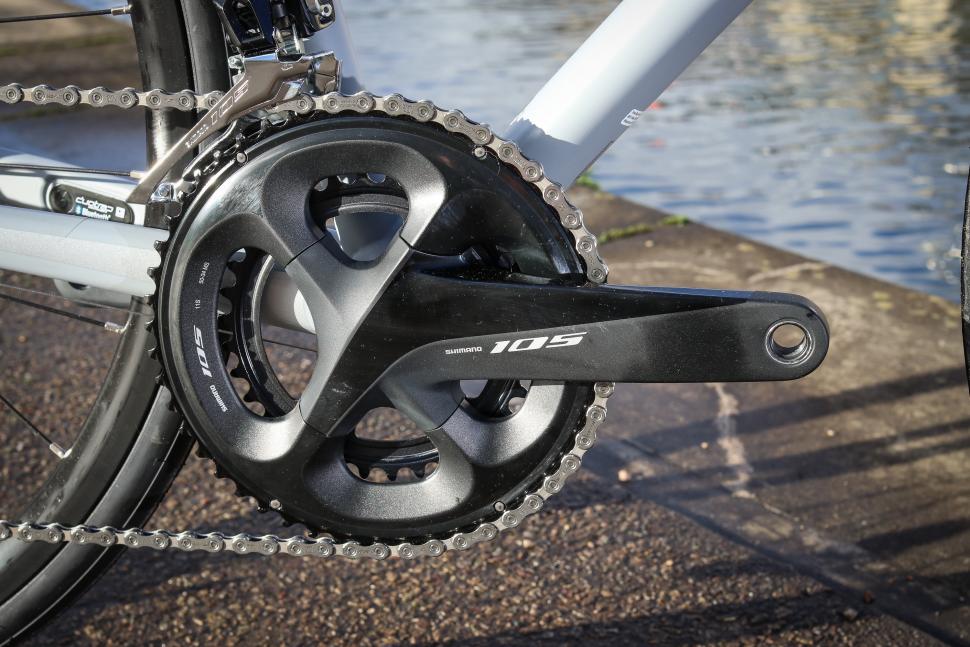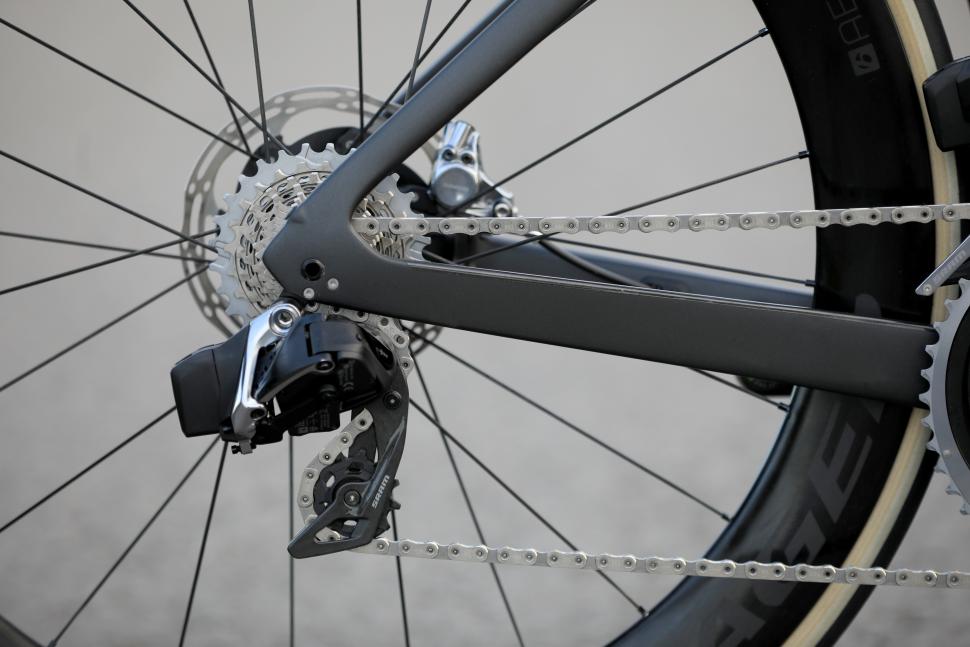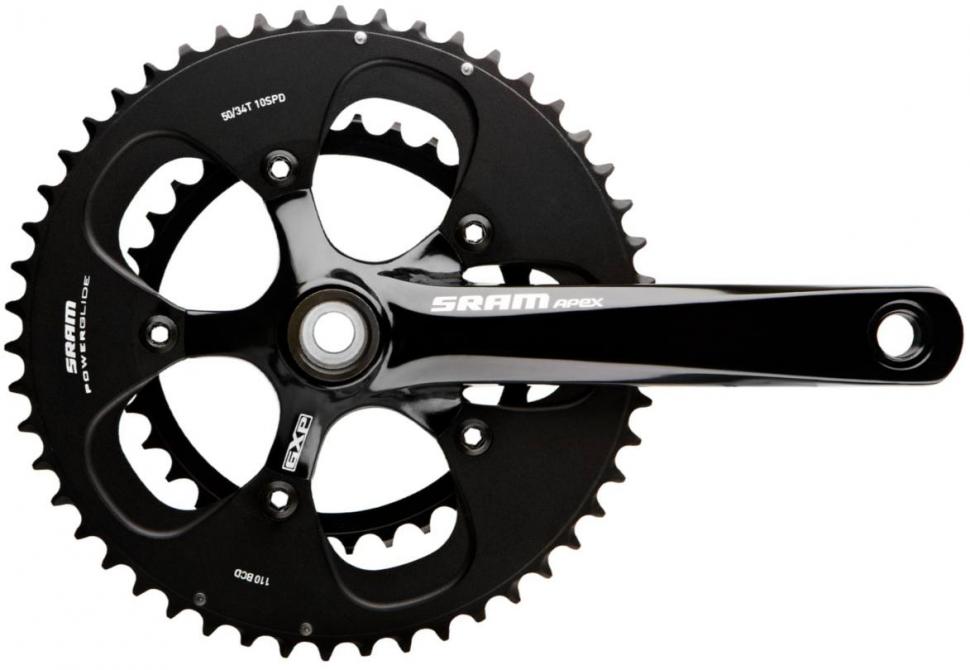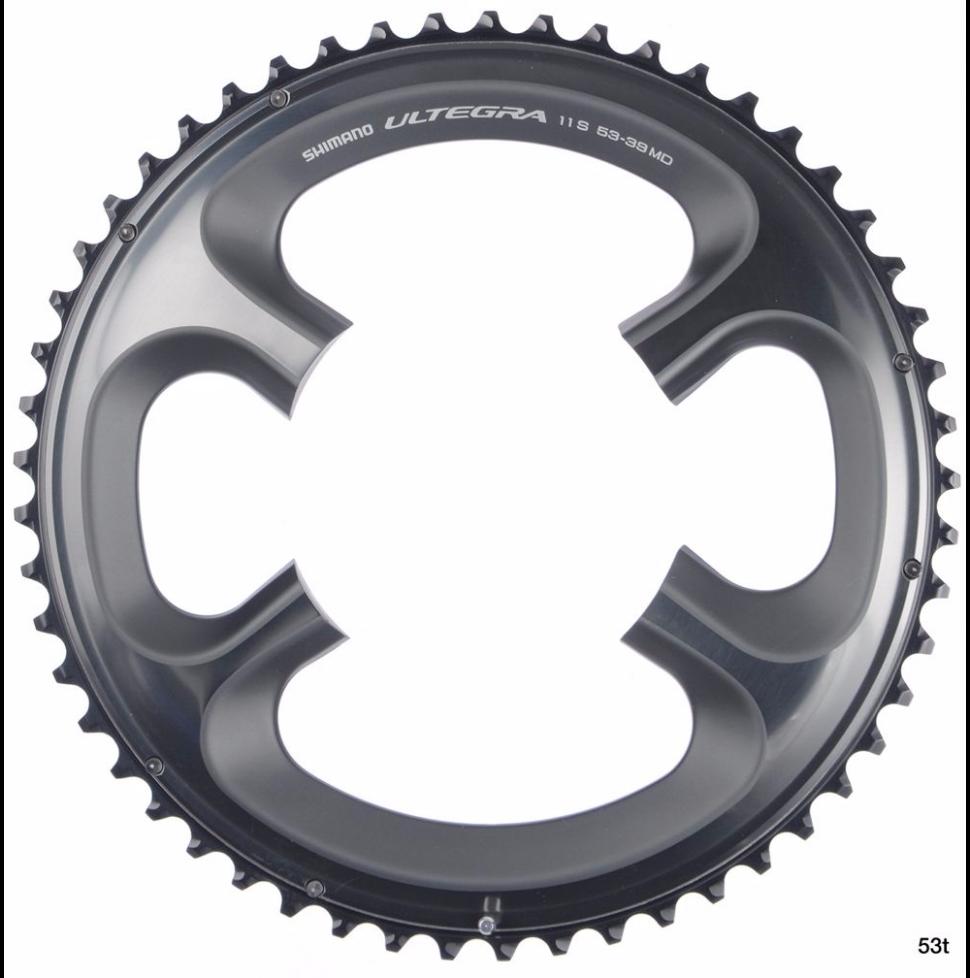- News
- Reviews
- Bikes
- Accessories
- Accessories - misc
- Computer mounts
- Bags
- Bar ends
- Bike bags & cases
- Bottle cages
- Bottles
- Cameras
- Car racks
- Child seats
- Computers
- Glasses
- GPS units
- Helmets
- Lights - front
- Lights - rear
- Lights - sets
- Locks
- Mirrors
- Mudguards
- Racks
- Pumps & CO2 inflators
- Puncture kits
- Reflectives
- Smart watches
- Stands and racks
- Trailers
- Clothing
- Components
- Bar tape & grips
- Bottom brackets
- Brake & gear cables
- Brake & STI levers
- Brake pads & spares
- Brakes
- Cassettes & freewheels
- Chains
- Chainsets & chainrings
- Derailleurs - front
- Derailleurs - rear
- Forks
- Gear levers & shifters
- Groupsets
- Handlebars & extensions
- Headsets
- Hubs
- Inner tubes
- Pedals
- Quick releases & skewers
- Saddles
- Seatposts
- Stems
- Wheels
- Tyres
- Health, fitness and nutrition
- Tools and workshop
- Miscellaneous
- Cross country mountain bikes
- Tubeless valves
- Buyers Guides
- Features
- Forum
- Recommends
- Podcast
feature
 Trek Emonda ALR5 - chainset.jpg
Trek Emonda ALR5 - chainset.jpgAre your chainrings and cassette worn? Here's how to tell when they need replacing
Your bike's drivetrain will gradually wear and you'll eventually need to replace the various components, but how do you tell when that time has come? We asked the experts at Shimano and SRAM.
We've previously dealt with the issue of when to replace your chain. Get all the info on that in our article: When should you replace your chain? That's a big factor here.
If you're unclear on any terms used below – chainring, cassette or sprocket, for example – head over to the road.cc A-Z of cycling jargon for an explanation.
"Over time, as your chain wears and stretches, you'll notice your gear shifts become less precise and less fast," says Shimano's Ben Hillsdon. "A worn out chain will also wear out your cassette and chainring teeth. The most important thing to change is the chain. Doing so can extend the lifetime of your cassette and chainrings, which in the end will save you money."
SRAM technical expert Chris Mckenney agrees.
"Chains, chainrings and cassettes all wear together," he says. "If a rider goes too long on one chain and/or doesn’t clean and lubricate their drivetrain regularly then the replacement costs can be high.
"Keeping an eye on chain wear is the best way to prolong cassette and chainring lifespan. SRAM recommends using a drop-in style chain checking tool to measure service life. Once the tool shows the chain is worn it's time for a new one. And keeping a chain clean and properly lubricated helps increase its service life."
Sooner or later, though, even if you follow all the advice, you'll need to change your cassette and chainrings. That's just the way of the world.
"You can consider replacing the cassette or chainrings at the same time as replacing the chain," says Shimano's Ben Hillsdon. "This will ensure you're not running a new chain on worn down gears which won't give you the precise shifting you replaced your chain for in the first place."
You certainly don't need to change the cassette and chainrings every time you swap the chain, though, it's just that you should check out the health and performance of these other drivetrain components as soon as you've installed a new one.
"Changes in tooth shapes and skipping under load are signs that your cassette needs replacing," says SRAM's Chris Mckenney. "It is very hard to see the changes in shape until they are well past the end of their lifespan but everyone has likely experienced a new chain skipping on worn cogs. It's a well-known phenomenon.
"The easiest way to determine if your cassette is worn out is to install a new chain. If the chain skips under pedalling load then it’s time for a new cassette. Of course, do this test in such a way that a skipping chain will not injure the rider! There are some cassette checking tools on the market but they are somewhat subjective to use. They all use the same principle of applying load to a new chain on worn cassette teeth so a parking lot test ride to see if the chain skips will give the same result."
Replacing your cassette is a relatively straightforward job that takes minutes, but you do need a couple of specialist tools: a chain whip and a lockring tool, sometimes called a cassette tool (make sure you get the right standard for the type of cassette you have).
Find out how to change your cassette
What about your chainrings?
"Rough/noisy running is the best way to tell if a chainring needs replacing," says Chris Mckenney of SRAM. "Unless a chainring is well beyond its service life it is very difficult to see this visually; chainring teeth slowly take on the shape of a shark’s fin in use.
 "An inner chainring is considered worn when a clean new chain starts to chain suck [when doesn't release well at the bottom of the chainring) and an outer chairing is considered worn when it is very rough running or the shifting is poor or inconsistent. It is somewhat of a judgment. However, if you see daylight between the teeth and a new chain then the chainrings are likely worn."
"An inner chainring is considered worn when a clean new chain starts to chain suck [when doesn't release well at the bottom of the chainring) and an outer chairing is considered worn when it is very rough running or the shifting is poor or inconsistent. It is somewhat of a judgment. However, if you see daylight between the teeth and a new chain then the chainrings are likely worn."
You should change your chain at the same time as the cassette and/or chainset.
"A worn chain on a new cassette or chainrings will only accelerate the wear," says Chris McKenney. "As the chain is typically the least expensive part in the system, it makes sense to add a new one when installing new chainrings or a cassette. Generally, installing the new chain is what confirmed the old parts were worn out anyway."
Brands don't offer guidelines relating to the mileage you're likely to get from your cassette or chainrings because there are too many variables involved, such as the conditions you ride in (rain, mud, dust...), whether the correct lube was used for those conditions, maintenance intervals and rider shift patterns.
For that reason, best practice is:
• Keep your drivetrain clean and lube your chain regularly.
• Check your chain for wear regularly and replace it as soon as required.
• Check the performance of the chainrings and cassette after a change of chain and replace as necessary.
Mat has been in cycling media since 1996, on titles including BikeRadar, Total Bike, Total Mountain Bike, What Mountain Bike and Mountain Biking UK, and he has been editor of 220 Triathlon and Cycling Plus. Mat has been road.cc technical editor for over a decade, testing bikes, fettling the latest kit, and trying out the most up-to-the-minute clothing. He has won his category in Ironman UK 70.3 and finished on the podium in both marathons he has run. Mat is a Cambridge graduate who did a post-grad in magazine journalism, and he is a winner of the Cycling Media Award for Specialist Online Writer. Now over 50, he's riding road and gravel bikes most days for fun and fitness rather than training for competitions.
Latest Comments
- brooksby 33 min 27 sec ago
Then someone really needs to tell the council…
- andystow 37 min 43 sec ago
That article is far too kind to Moses. I highly recommend reading The Death and Life of Great American Cities. Despite the title, it applies to...
- RobD 1 hour 46 sec ago
Curious as to why not? I can understand people's concerns about hookless, I was just wondering why you wouldn't buy hooked?
- David9694 1 hour 34 min ago
Unpopular opinion - I think the information available when this story was first written up was pretty sketchy....
- chrisonabike 2 hours 35 min ago
Hub brakes have their own trade-offs. I actually liked the one I had for its particular application - in a "utility" bike where I didn't care...
- qwerty360 2 hours 46 min ago
Given that every other lime bike I see on my 1/week commute into london appears to have its rear light hanging off by the cable rather than mounted...
- Miller 4 hours 7 min ago
Go for it Pogi! I will be in the velodrome on 13th April and it would be fantastic to see him arrive.
- jaymack 4 hours 29 min ago
Indeed but he's a can't. Can't be arsed to tell the truth, can't be arsed to build new Hospitals and can't be arsed to do anything for anyone save...
- chrisonabike 7 hours 34 min ago
What wokery is this? I thought those tech-bros were there to save us from the "mind virus"?
- hawkinspeter 20 hours 22 min ago
Opposition to controversial East Bristol Liveable Neighbourhood ‘will filter away’ say council bosses...



Add new comment
39 comments
Is a parking lot the same as a car park ?
I have never experienced a chain breaking, and that's after several decades of the deprecated practice of pushing any old pin out and pushing it back to rejoin. I have now moved on to removable split links, which have facilitated my present chain/ cassette/ chainrings policy which I am applying to the steel gravel bike of October 2019. I was determined to wear out the originals systematically, before installing the replacements I bought at the same time. I must have done over 12000 miles with four chains, replacing them when they reach Level 1 wear on the Rohloff chain tool. I'm now going back to each chain in turn to wear them to Level 2+, when they're binned as has just happened to Chain 1. It's all going well so far, but the crucial question is whether the cassette and small ring (32- wish it was steel!, replacements are 46-30) will last through the remaining 3 chains.
Some old school bike techs advocate leaving a chain on till it drops approach - I know a tech at a LBS who said that to me a few weeks ago.
Firstly, a worn chain loses strength. These are not the chains of our youth which were heavy but lasted for the life of the bike it seemed, but an old chain beyond its design life is a chain waiting to break. The most I got out of a 10 speed chain on a road bike while within the wear guage tolerance was about 3,000 miles. I reckon a cassette lasts for about 3, sometimes 4 chains, so about 10,000 miles, but I could always tell the difference when renewing the cassette. 11 speed chains seem to last for about 2000 miles.
When a chain is not worn, it doesn't cause much wear, but as it wears, the damage a worn chain produces increases, as the chain bears all the stress on a single tooth, which causes more wear (a new drive chain bears the load across several teeth of chain ring and cassette).
Once a cassette (and in extreme cases, chain rings, which have more teeth to spread the wear over) has been over-worn, a chain simply does not fit, so you have no choice but to change the cassette when changing the chain.
On mountain bikes, almost invariably the top gear, the 11 tooth cog, wears, as they are low geared and riders ploughing along the road invariably end up grinding along in top - very few teeth, high pedalling force, rapid wear. Some cyclists stick in a couple of gears, so end up with a single cog worn, hence the skipping in one gear. I would always suggest using the full range of gears not just to save your knees but also to save wear. Spinning also produces less wear - going up a hill at a high cadence requires less force through the drivetrain - grinding up a hill is putting a lot of pressure through the chain and cogs and will create more wear even though the chain and cogs are being worn fewer times.
Worn chain rings are rarer because they spread the load across far more teeth, but they do wear and eventually become unusable. Aside from chain suck (chain refusing to drop off the chainring at the bottom), chain rings can also cause slips.
Slips and snaps mean a good chance of falling off. So, I would say, change the chain according to a wear gauge, keep it clean (but avoid using degreasers that potentially stay in the chain and damage the oil applied afterwards) and that will be the best way to have a reliable, safe bike at minimum cost (that is you can run a bike more cheaply, but it won't be safe to ride for a higher proportion of its life).
I'm currently avoiding sixth gear on my cassette (last week or so): if I'm in middle-chainring-and-sixth-sprocket and I stand on the pedals to either accelerate away or go up a hill then it skips. I suspect I might need to change the cassette soon...
You should change it now.
I broke a chain starting on to a roundabout which was a bit hairy. Too easy to end up with a injury if anything slips or breaks.
"Broke a chain"?!
I'm just spending more time in middle-chainring-and-fifth-sprocket or middle-chainring-and-seventh
That said, I think I'll book into my LBS after payday...
I think it was Chris Haynes who said he bent his chain after skidding when 2 or 3 were cycling on the wrong side of the road at him and he had to swerve.
I do better chain checks these days (new one just arrived today).
It was me...I'd forgotten about that. I still have no idea how that happened. It was a gang of kids riding from Westminster eastwards coming from behind the scaffolding / boarding opposite Northumberland Ave...
I broke a chain twice on one ride,fixed it first time, then it let go in a different link on a roundabout, the hairiest bit other than it completely confuses everyone around you what's just happened, was retrieving the chain in between the traffic,as it had spat off the chain rings across the road.
Is a shark's fin a different shape when it's not in use?
Old chainring cannot cause a skip. If it locks it locks. It will cause delay in shifting and rubbing during change from small to large ring as the tiny chain grips below the chain teeth are not sharp enough to lift the chain. Also, it will cause premature chainwear.
Old cassette on the other side can immediately be identified as the shifting will fail - regardless of chain age and adjusting the barrel adjuster will make thing worse.
I'm not so sure. When I had a new chain and cassette fitted recently the first few pedal strokes produced a crunching sound and a "WTF" reaction from me. The cause was quickly identified as the chain not happy on a worn chainring (a TA 38t inner). LBS replaced it with a £12 Fat Spanner chainring and it was fine.
Yes it can.
A steel chain does not stretch, it does wear, but it does not stretch. What is perceived as stretch is simply the pins and bushings wearing and gives the appearance of stretch.
Whilst you are correct that none of the components stretch, a roller chain operates under tension and as these individual components wear, the pitch increases and the chain does indeed become longer so I think it is a fair term to use
Anybody know what the cassette pictured above is? (between next down from the chain checker)
Probably SRAM XG1090?
That cassette looks like an accident waiting to happen.
Beleive it or not, the chain had only started slipping in the last 10 miles before that picture was taken.
Here's a tool for checking cassette wear.
Thank you. I had never heard of it. There is this slightly cheaper one too
https://www.amazon.com/Unior-Sprocket-Wear-Indicator-One-Color-One-Size/...
I tried to find one on aliexpress but failed.
Then strip it down and sell those middle gears to a ninja... perfect throwing star...
Carlos does like a nice straight chainline judging by the way he sits in the middle gears on his block! Nicely done sir!
PP
I don't have this problem - hub gears and belt drive on my commuter.
Me either, I use Campagnolo... Still using original mid-90s 9 speed chainset and rings along with a 5 yo cassette and 2 yo chain on my main bike. Current combination has done about 7-8,000km, the cassette must have > 12 and the rings 20k+? on them. I'm not a big cleaner and luber either. It just works and lasts. Oh, and since 2008 I've lived in Scotland where it rains all the time and destroys chains and cassettes...
For me when a chainring has gone too far, the skipping is worse, properly dangerous, especially when trying to pull away from the lights or at junctions.
And my goodness Carlos, I didn't think you could stretch and wear a cassette quite that much. Obviously still rideable, up to that point, otherwise you couldn't have acheived that.
Are worn chainrings likely to cause skipping under load in the same way a worn cassette would?
I have an old Dawes MTB which started skipping when I replaced the worn chain. I got the cassette replaced which improved things a bit but it still skips. I can see two scenarios.
Whole drivetrain needs to be replaced as it was all worn out so time to get a new chainset. Or.
The new chain is now damaged because it was used on a worn cassette.
Or both...
Quite possibly.
If you let an old chain stretch, then the distance between successive teeth on the cassette or chainring will also stretch to match. A new chain will have a pitch of 1⁄2 inch (12.7 mm), a stretched chain will obviously be more than that. Recommended maximum wear is 0.5% for 11 speed and no more than 0.75% for 10 speed or below. If your chain has stretched really badly, then the new chain will no longer fit the profiles on your chainring and it will probably jump when under power.
Most people will use one chainring more than the other, maybe the middle ring on a 3x and the big ring on a 2x. So the one that you use the most will probably be the worse. I remember that small chainrings on old MTBs were steel rather than aluminium and should be less likely to be stretched.
You could try using the least used chainring under power to see if it is better than the most used, this should answer your question... Or just add to the confusion
The distance between teeth on a chain ring cannot increase, teeth further apart would imply a larger circle which would be the opposite of wear. The gaps between the teeth can grow, but the pitch remains the same. Or even reduces as metal is worn from the bottom of the trough.
Hence a worn chain can be detected by slack at the chainrings. As the chain is now able to sit higher on the teeth instead of positiviely engaging in the bottom of the trough between teeth.
Pages